
Paragraph Paragraph


Building Building








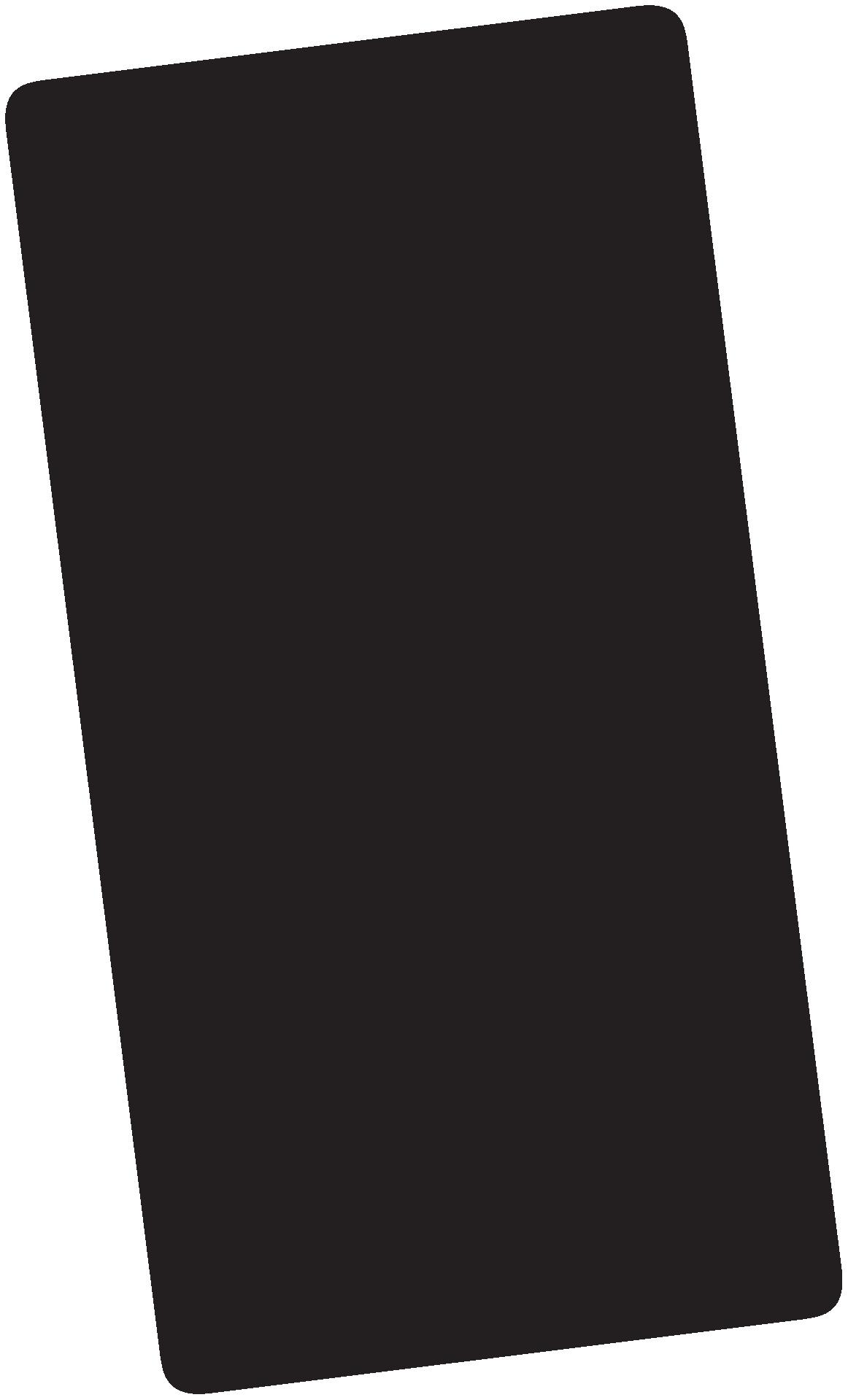
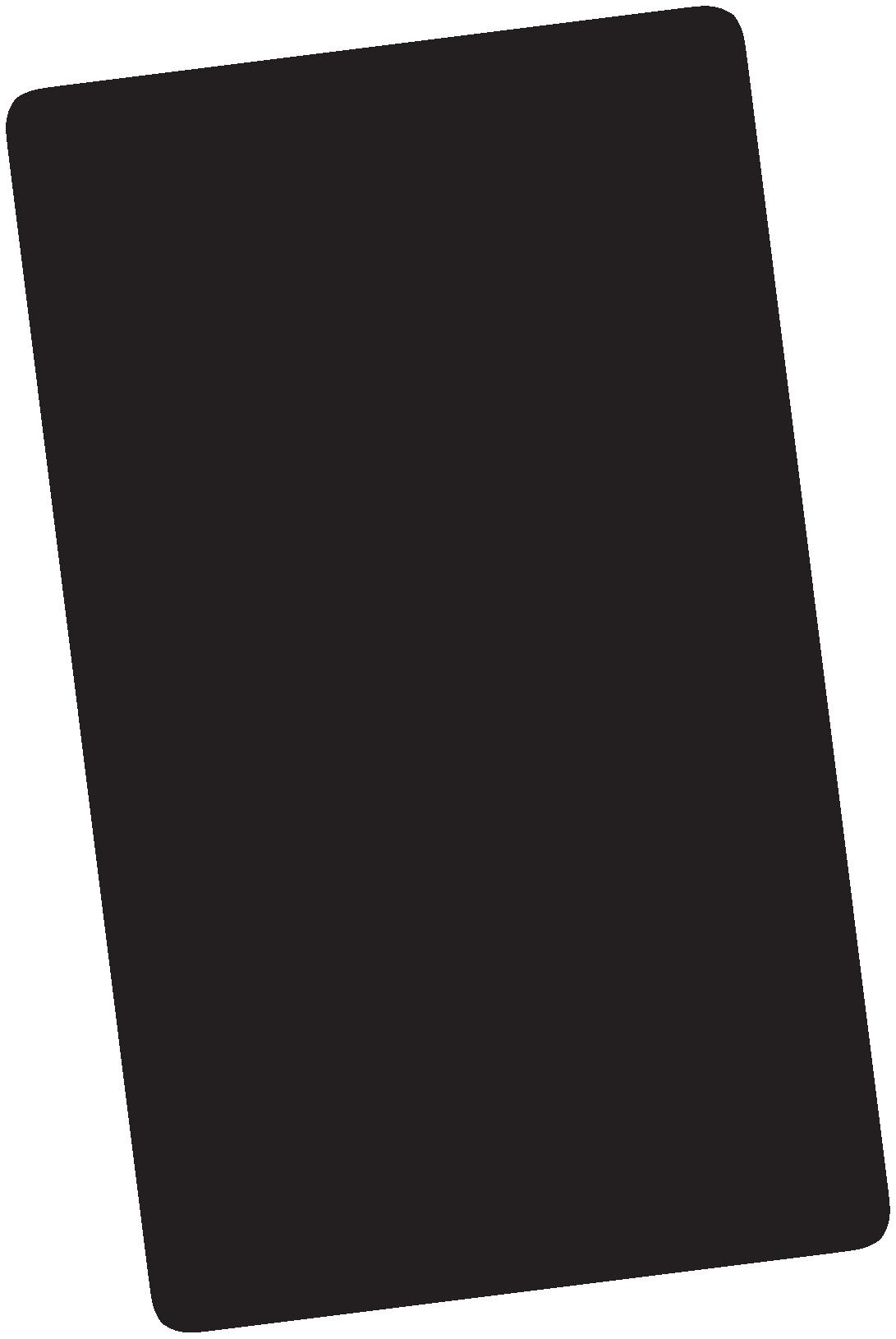
I have the best friend in the whole world.















I have the best friend in the whole world.

To guide students in the process of writing meaningful paragraphs and short essays.
By Patricia Y. Lewis

Paragraph Building - Student’s Workbook
ISBN 978-9962-709-10-7
Author: Patricia Y. Lewis
Executive Producer: Sheyla Henson
Edited and Revised: Celia Ana Forrester Caton
Adapted: Pablo Vidal González Murcia
Graphic Designer: Julio Santamaria
Published by Psycho Tools Inc. 2022



Grade:

School:

Teacher:




Writing paragraphs is the first step to achieve compelling writing. With this edition’s components, the Flip Book, the Teacher’s Guide and the Student’s Workbook, you will learn and inspire yourself to write your own ideas and express your thoughts in an organized and coherent way. Through the following practical exercises, you will improve your writing skills and polish your knowledgeofwrittenexpressionandgrammatical structure.




In writing sentences the first point you need to consider is a character or subject. It can be a person, an animal, or an object the sentence is about. It responds to the question who or what.
1. Create four characters of your imagination.
2. Illustrate each in the given box; then, write the name on the line.




The second point is to create a setting. A setting is a location or place. It is where the character is or the action develops.
1. Create four settings for each of the previous characters.
2. Illustrate the four settings and include the characters.
3. Name the character in each box and then describe the setting on the line below.




The third point that a sentence needs is an event. Event: It is what happens or takes place in the setting.
1. Choose an event for each character and setting you created.
2. Illustrate the event.
3. Write the name of the character, setting and event in the spaces




The last point you need to write in a sentence is a conclusion. Conclusion: It is the end of the events and actions the character does or what happens in the story.
1. Write a conclusion for each character, setting, and event you created.
2. Illustrate each conclusion.
3. Write the character, setting, event, and conclusion in the diagram below.
4. Write each complete statement on the line.




The verb “to be” is used in sentences that describe, identify, state a condition, or define a place or location of the character. The verb “to be” can either be singular or plural according to the subject.
I.Write sentences using the verb “to be” as indicated.
Singular subject in present tense (am, are, is)
PA
Plural am, are, is was , we r e , was are were identify
Compound subject in present tense (are)
Singular subject in past tense (was, were, was)
Compound subject in past tense (were)
state a condition define a place plural form of “be”
VI. Using the Present Progressive Form of the Verb (verb +“ing”) in Sentences
Sentences in the present progressive form describe actions taking place at the moment of speech. Look at the example below
Miss Cedeño is our baseball coach. She is teaching us how to hold the bat. Mauro is swinging his bat from left to right. The Samudio twins are learning to run the bases. I am practicing to pitch a ball. We are learning to play baseball.
1. Write five sentences using the present progressive form (verb + “ing”).
2. Choose five different verbs. Example Help – show – make – laugh - feed
VII. Using the Past Progressive Form of the Verb (verb+ing) in
Sentences in the past progressive form describe actions that were taking place at a moment in the past. Look the examples below:
• John and Lola were feeding the animals at the zoo.
• Joey was helping his neighbor.
• Carlos was showing his toys to his brother.
• I was making a cake.
• We were laughing at the joke.
1. Change the previous sentences you wrote in the present progressive to the past progressive
VIII. Changing from Past Progressive to the Present Progressive
1. Read the following paragraph carefully.
2. Underline the verbs.
3. Rewrite the paragraph on the lines below changing the verbs from past progressive to present progressive.
Yesterday, I was walking home from the park. Before, my friend and I were jogging on the trails. We were eating hot dogs and fruit juice. My friend was listening to music and singing along.
IX. Introducing Compound Characters/Subjects in Sentences
A compound character or subject is when there is more than one person, animal, or thing named in the sentence.
Look at the following example:
Singular Character/Subject
Joshua is a soccer player. He participates in tournaments every weekend and he is outstanding. He wins almost every game.
Compound Character/Subject
Joshua and Patrick are soccer players. They participate in tournaments every weekend. They are both outstanding. Joshua and Patrick win almost every game.
1. Write five sentences with singular characters or subjects
Singular Character/Subject
Introducing Compound Characters/Subjects in Sentences
2. Change the subjects of the previous sentences to compound. 1 2 3 4 5
Compound Character/Subject
X. Changing Sentences from Present to Future Tense with “Will” and “Be + Going To”
Look at the following example: 1
Present Tense
Sentences in Present Tense 1.
My family walks our dog at the park during National Holidays. They help it to eat and drink water. The dog plays with my brother Bill. Bill pampers the dog, because it is important to be kind. I think my family is the best.
Future Tense
My family (will / is going to) walk our dog at the park during National Holi days. They will help it to eat and drink water. The dog is going to play with my brother Bill. Bill will pamper the dog, because it is important to be kind. I think my family is the best.
Write five sentences in the present tense. 2.
Changing Sentences from Present to Future Tense with “Will” and “Be + Going To”
3. Now change the previous sentences to the future tense with “will” and “be + going to”.
XI. Using “There Is” and “There Are”
“There is” and “There are” are introductory phrases in statements to indicate that something or someone exists.
1. Look around in your classroom. What things do you see?
2. Write five sentences introduced by “there is” and “there are”.
“There is not /isn’t” and “There are not / aren’t”
There are negative introductory phrases for statements or stories to indicate that something or someone is not present or does not exist.
1. Write five sentences that state what there isn’t or aren’t in the classroom. For example:
• There isn’t a pet in the classroom.
• There aren´t any tablets here in the classroom
What are connectors, and how are they used?
They are the words that join or connect one sentence to another. They also connect words and help to expand ideas. For example:
Let’s see a list of common connectors that help you to join and expand the sentences you write. and Family, friends, and sports are my favorite topics.
My friend likes to swim, but I like to run.
John and Pedro are not at school because they are on vacation. but because
Introduce sentences /opinion I believe, it seems to me, I feel, I think, in my opinion
Indicate the steps in a process
Add ideas
Conclude Illustrate Compare Contrast
Cause and effect
Persuasion
firstly, secondly, then, next, finally before and, also, in addition, and then, too, or to conclude, finally, overall, in conclusion to sum up for example, for instance, such as, in other words, to show that but, however, in spite of, otherwise, nevertheless, instead of therefore, so, because, as a result, due to certainly, for this reason, again, besides, clearly, of course like, as with, in the same way, so as if
Exercise #1:
3. Choose the correct connector to complete the statements. Some birds are loud ___________ noisy. ____________________ parrots and macaws are among the loudest. They are _____________ the butterflies in the garden, bright and colorful. They can _____________ learn to imitate human voices. As pets, they are entertaining _____________ sometimes they get aggressive. (but/and) (after/like) (but/also) (after/but)
Exercise #2:
4. Read the following paragraph.
(for example/before)
5. Select from the word bank the connector that best completes the statements.
because ● before ● after ● finally ● I feel ● next ● hen ● first
Pancho is my favorite pet. He is a parrot and I have to attend to him every day after I come back from school. He is always happy to see me return home. Before I do my homework, I clean his cage. I call it his mansion _________________ it is big. _____________, I open the door, and __________ he climbs onto my shoulder. ______________ I clean up all the old food, pour fresh water in the cup, and _____________________ I give him his favorite food. ____________________ he loves me more than everybody else.

Exercise #3:
1. Read carefully this example illustrating the use of connectors.
2. Underline the connectors you identify
In my opinion, the writing process is one of the most interesting and rewarding experiences that a teacher, or anyone may enjoy. The first step is to decide what you are going to write about, that is the topic. Secondly, it is important to organize your ideas. Otherwise, you may find it difficult to keep your ideas on track and you may want to give up the task too soon. Then, create a topic sentence. After that, you may draft an outline. In addition, you can brainstorm by writing down any ideas that come into your mind. For example, if you decide to write about your job as an educator, you may want to develop a persuasive paragraph. Of course, there are other types of paragraphs you can develop also. I think that it is easier to write about what we know the most because we feel more comfortable with it. It is like choosing what we are going to put on every day.
To conclude, writing, just as with every process, requires careful planning and determination to achieve the desired results.
Exercise #4:
I. Match the connectors with the corresponding sentence.
1. also _______ I have to do my homework ________________________.
2. and then _______ Irene used a pen __________________ a pencil.
3. again _______ The airplane looks ________________ a bird.
4. instead of _______ First the butter ________________ the cheese.
5. like _______ We saw monkeys, gorillas, and mandrills, ___________ birds.
Part two of the Paragraph Building series introduces the Paragraph building Flip Book. It is a useful component to guide students in creating and developing paragraphs, which is the main goal of this Part 2.
The Flip Book focuses on six different topics among which there are three groups of detail tabs providing different options to develop detail sentences. Finally, it ends with a conclusion tab which is a closing sentence. You can mix and match the details to obtain a variety of sentences within a topic.
A paragraph is a group of sentences that talk about one single topic, idea, event, description, and so on. The topic is the specific aspect that is developed or discussed in the paragraph. For example, school subjects, video games, sports, music, fashion, pets, love, and many more. A para graph usually begins with the topic sentence. However, it can go in the middle, or even at the end of the paragraph. Then, it is followed and supported by detail sentences that are closely related. The length of the paragraph depends on the details it develops. As you add details, you describe, explain, give examples, and so on. Finally, the conclusion is a sentence that summarizes and confirms what has been said about the central idea.
The main characteristics of a paragraph are unity, coherence, and support.
To discuss only one main point related to the topic sentence.
All the sentences are interrelated and connected to develop the leading idea. Here the connectors play an important role because they make the ideas flow from one to the other smoothly.
Discussion of specific details that support the main idea.
III. Identifying the Parts of the Paragraph
1. Circle the topic and the main idea.
2. Underline the detail sentences in blue.
3. Underline the conclusion in red.
A paragraph is a group of sentences that develop one single idea, event, description, or process.
Some paragraphs tell stories, others describe people or things, and others explain a process.
When a paragraph tells a story, it is a narrative paragraph; in addition, if it discusses the characteristics of someone or something, it is a descriptive paragraph.
Moreover, when it explains a process it is an expository paragraph and so on. So, a paragraph is a group of related sentences that together develop one main idea stated by the topic sentence.
Match the words with their definitions.
1. paragraph _____ to discuss one main topic
2. topic _____ to discuss specific details
3. topic sentence _____ the specific aspect developed
4. details _____ they explain, describe, give example
5. conclusion _____ to interrelate all sentences
6. unity _____ group of sentences
7. coherence _____ main idea sentence
8. support _____ summarizing sentence
This innovative resource is designed to help students write meaningful paragraphs in a fun way. It features six different topics identified with tabs which are nouns. Under each topic, there are three groups of detail tabs, which include a variety of nouns, verbs and adjectives. Finally, the conclusion tabs are full sentences that can close the paragraph.









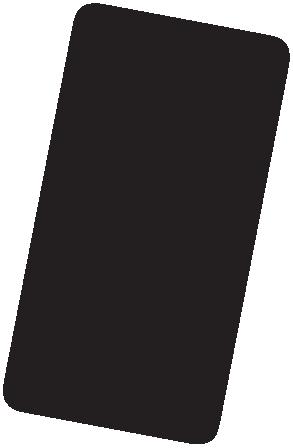
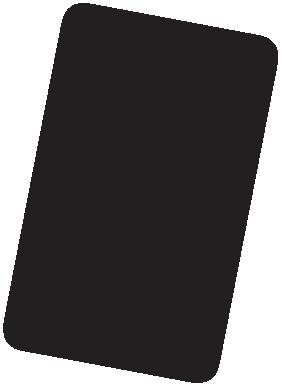
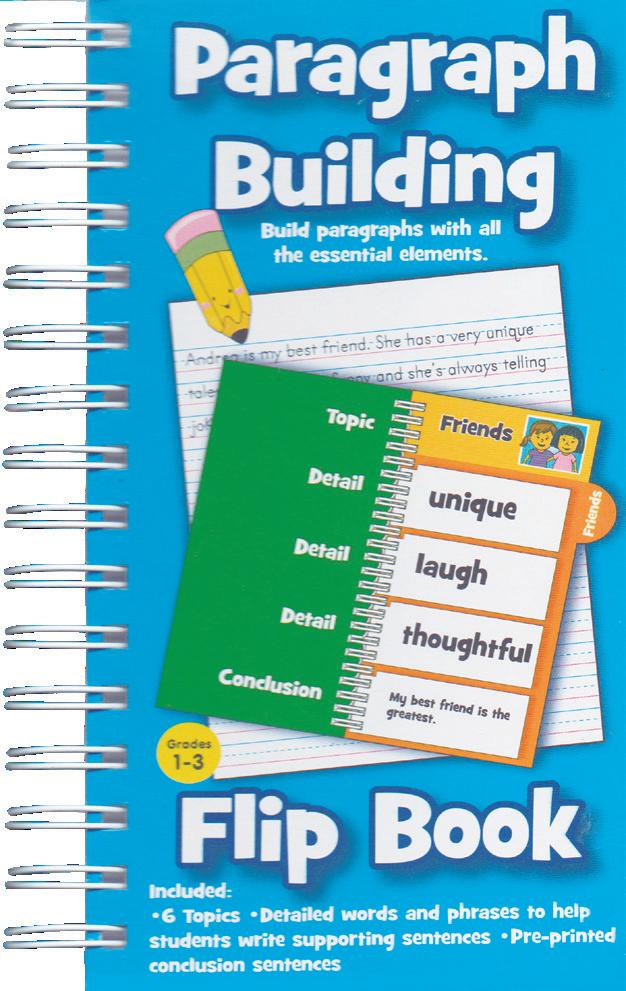
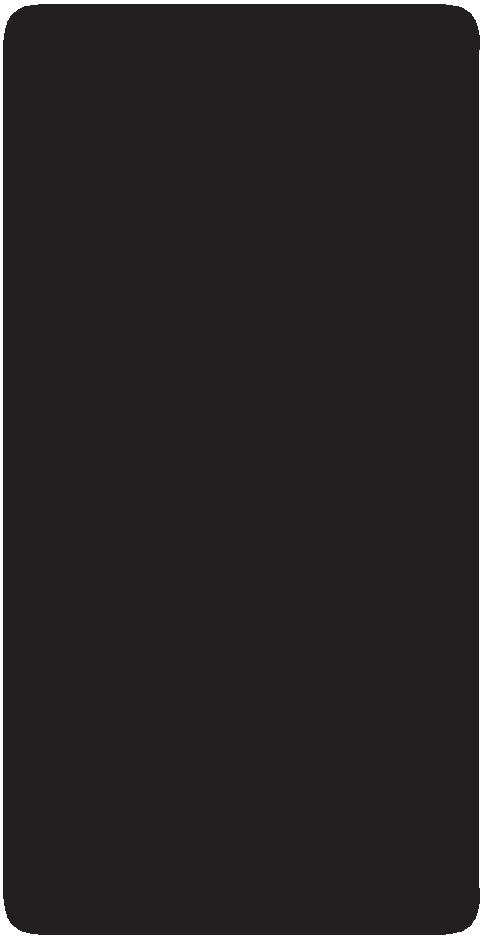





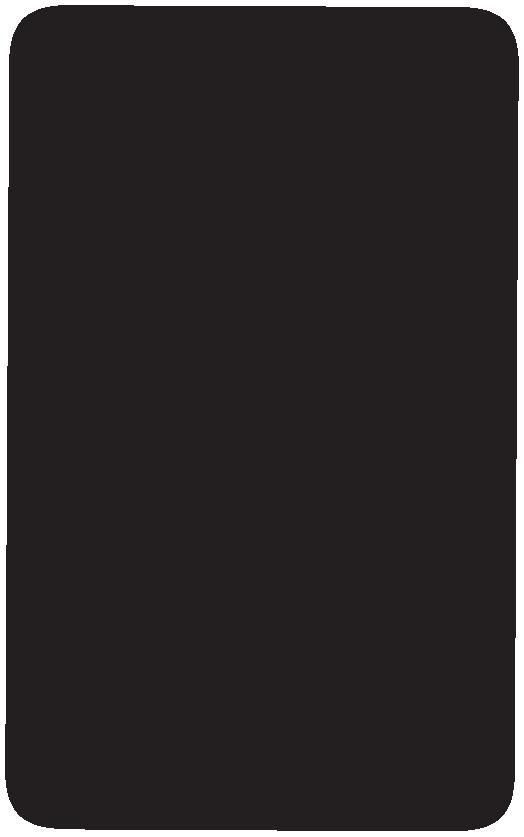
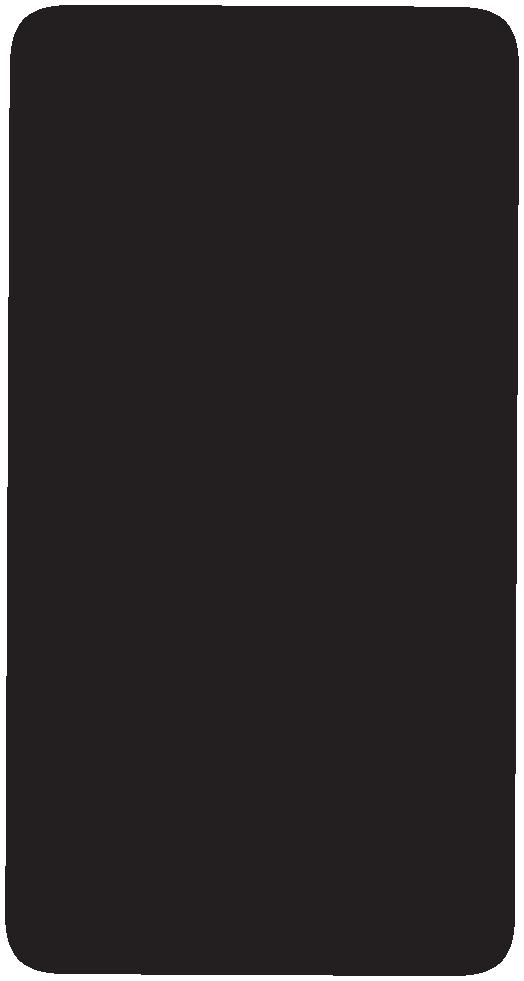
To use the Flip Book, listen carefully to the teacher’s indications.
1. Select the topic you plan to write about.
2. Create the topic sentence based on what you want to develop about the topic.
3. Write the detail sentences that support the topic sentence.
4. End with a conclusion that wraps up the main idea.
5. Share your work with your classmates.
TOPIC
In this second part of the Paragraph Building Workbook you will learn to write paragraphs to continue expressing your ideas more fluently.
The first aspects you will see are those necessary to include in writing. They are topic, topic sentence, details and conclusions.
The topic is what you are going to write about. For example: school subjects, video games, sports, music, fashion, pets, love, and so on.
1. Take a look at your Flip Book. How many topics are there? List them in the spaces below.
2. Read all of them carefully and select three. TOPIC
VII. Creating a Topic Sentence
It is the sentence that introduces or closes the paragraph by stating the main idea in it. It presents the main focus of the paragraph. Before you aim to write the topic sentence keep in mind that it must state and define what the content of the paragraph is going to be about. It is common that the topic sentence names the topic.
1. Select three different topics from the previous list from the Flip Book.
2. Write a topic sentence with each of the three topics you selected.
3. Remember to ask the questions about the topic, such as who, what, where, when, why, how, which and so on.
DETAILS
1. Read the following example: active They are the sentences that describe, explain, illustrate, and expand the idea of the topic sentence.
TOPIC SENTENCE
DETAIL 1
There are different kinds of sports that people can practice.
I like to play active sports like basketball, soccer, and baseball
DETAIL 2
DETAIL 3 active rules fans
Each sport has its rules that players must follow.
Some sports attract more fans than others. I believe soccer is the one of those sports.
2. In the corresponding spaces, copy each topic and its topic sentences you wrote previously.
3. Below, select three appropriate details to support the topic sentence and write a sentence with each.
TOPIC
TOPIC SENTENCE
DETAIL 1
DETAIL 2
DETAIL 3
TOPIC
TOPIC SENTENCE
DETAIL 1
DETAIL 2
DETAIL 3
TOPIC
TOPIC SENTENCE
DETAIL 1
DETAIL 2
DETAIL 3
Conclusion
1. Read the following example. Observe how the central idea (topic) in the paragraph is completed. It is the sentence related to the topic that summarizes or closes the paragraph.
TOPIC Sports
TOPIC SENTENCE There are different kinds of sports that people can practice.
DETAIL 1
IX. Completing the Paragraph with a Conclusion active
DETAIL 2
DETAIL 3 active rules fans
I like to play active sports like basketball, soccer, and baseball.
Each sport has its rules that players must follow.
Some sports attract more fans than others. I believe soccer is the one of those sports.
Conclusion The different sports that fans enjoy have rules to follow, and they are played worldwide.
2. Practice ending your paragraphs with a conclusion.
TOPIC TOPIC SENTENCE
DETAIL 1
DETAIL 2
DETAIL 3
Completing the Paragraph with a Conclusion
TOPIC
TOPIC SENTENCE
2
X. Comprehensive Assessment
1. Select a topic from the Flip Book.
2. Write a complete paragraph of your own.
3. Remember to use connectors to join and expand your sentences.
4. You may include more than three detail sentences.
TOPIC
TOPIC SENTENCE
DETAIL
DETAIL
DETAIL
Conclusion
I. Different Types of Paragraphs
1. Write the description of the different types of paragraphs in the corresponding box.
Descriptive Paragraph
Narrative Paragraph
Expository Paragraph Persuasive Paragraph
1. Write the type of paragraph on the line below each description.

• States an opinion.
• Gives reasons.
It is: _______________________

• Makes a picture with words.
• Appeals to senses. It is:_________________
• Organization is the key.
• Examples and evidences are present. It is: ______________________

• It has beginning, middle and end.
• Tells a story. It is:_______________________
Writing is the product of an interesting process, and there are good habits you need to practice to achieve the goals. There are many young writers like you, who love to read and write stories and create video games they enjoy. Focus on the fact that all begins with a simple idea or character the writer describes and builds by expanding adding elements.
Review the following writing rubrics before you start the process:
1 Capitalize all the beginning words of the sentences and all the proper names.
2 3 4 5 6 7
Write complete sentences.
Use a pencil to write the first draft.
Punctuate sentences correctly.
Use the dictionary to check the spelling of unfamiliar words.
Read carefully what you wrote.
Revise your sequencing, connectors, and conjunctions. Check if the series of events in each sentence make sense as a paragraph.
Asses your work:
• Does your paragraph develop one topic?
• Is it coherent?
• Does it have a compelling conclusion?
The use of the verb “to be” is common in writing descriptive paragraphs. Other words that are helpful when describing are sensory verbs and adjectives. The aim of a descriptive paragraph is to create a picture in the readers mind. Sensory verbs appeal to the five senses. Those are:
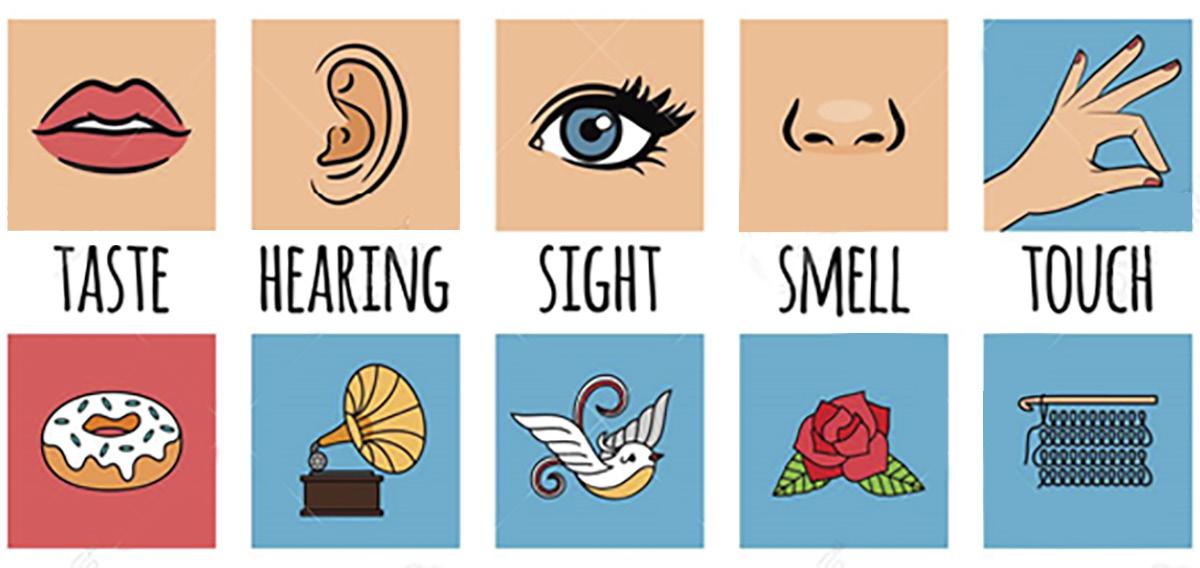
homemade granola looks yummy. Dad’s new fruit mixes taste delicious.
The music band sounded too loud, so people left the concert early.
Clothes smell fresh and clean after they are washed.
IV. Descriptive Paragraph Reading Exercise
1. Read the following descriptive paragraph.
2. Identify and underline the verbs “to be” in blue.
3. Circle the sensory verbs and the adjectives.
4. Recognize the connectors in the paragraph and underline them in red.
TOPIC SENTENCE
DETAIL 1
DETAIL 2 DETAIL 3
Neighborhoods are places called communities.
They are sectors where people live and communicate sometimes as members of a big family.
There you can feel safe because many neighbors know you and your family and they protect you.
The stores are near too.
DETAIL 4
DETAIL 5
DETAIL 6
DETAIL 7 DETAIL 8
Conclusion
For example, from my house, I can walk to the supermarket in eight minutes.
I like to go there because it smells clean and the food always tastes fresh.
Also there are parks where families and friends go to enjoy good moments, to do sports, and walk.
A park is like a big social area in the neighborhood.
There we can meet people and make new friends.
To finish, I am happy that I live in a cool neighborhood.
V. Writing a Descriptive Paragraph in Present Tense TOPIC
Descriptive Paragraph
Writing Checklist
Before starting to write a descriptive paragraph, make sure you take into account the following:
Appeal to the senses. Use adjectives to describe. Focus on one thing or person at a time.
TOPIC SENTENCE
DETAIL 1
DETAIL 2
DETAIL 3
DETAIL 4 Conclusion
Writing Exercise Instructions:
1. Select a topic from the Flip Book to write a descriptive paragraph in present tense.
2. Ask yourself what you want to write about the topic. Remember the question words: what, who, where, when, how, and so on.
3. Write the topic sentence.
4. Develop and expand the details selected from the Flip Book joining sentences with connectors.
5. Write at least three detail sentences.
6. Close with a conclusion related to the topic sentence.
1. Read the following narrative paragraph.
2. Identify the sequence of events and circle the verbs in past tenses.
3. Underline the connectors in red.
TOPIC Sports Team
TOPIC SENTENCE
DETAIL 1
DETAIL 2
DETAIL 3
DETAIL 4
Our soccer team was never the best one until the quarter finals.
It had me, Mauricio, Tomás, Charlie and Francisco. We always lost the games until the new youngster moved to our neighborhood.
The newbie moved in with a pair of soccer cleats and an official team shirt.
The kid plays offensive midfielder and runs faster than any one of us.
The kid´s attempts at scoring a goal never fail, no matter how much the opposing team tries to block us.
DETAIL 5
And the kid is always polite; never yells, spits, or picks a fight.
DETAIL 6
DETAIL 7
DETAIL 8
Conclusion
Just a couple of weeks ago, we were playing the quarter finals.
The other team was trying to cut our winning streak.
Then, in the last ten minutes, the score was one-to-one when the newbie kicked the ball straight into the goal.
Some of the other kids and parents say that the new kid is too advanced, but she is as good as me, Mauricio, Tomás, Charlie and Francisco; so we don´t care that the newbie is a girl.
The text is adapted from “The New Kid” by Mike Makley
Narrative Paragraph
Writing Checklist
Before starting to write a narrative paragraph, make sure you take into account the following:
Maintain an orderly sequence. Use connectors appropriately. It must have a beginning. development and ending.
TOPIC
TOPIC SENTENCE
DETAIL 1
DETAIL 2
DETAIL 3
DETAIL 4
Conclusion
Writing Exercise Instructions:
1. Select a topic from the Flip Book.
2. Following the same steps from the previous exercise, write a narrative paragraph in past tense.
3. Let your sentences flow naturally using connectors.
4. Write at least three detail sentences.
VIII. Expository Paragraph Reading Exercise
1. Read the following expository paragraph.
2. Identify the problem and the different reasons that caused it.
3. Underline the connectors in red.
TOPIC
TOPIC
SENTENCE
DETAIL 1
DETAIL 2
DETAIL 3
DETAIL 4
DETAIL 5
DETAIL 6
DETAIL 7
Conclusion
Many cats dislike kitty doors.
People often install a kitty door, only to discover that they have a problem.
The problem is that their cat will not use the kitty door.
There are several common reasons why cats will not use kitty doors.
First, they may not understand how a kitty door works.
Second, many kitty doors are dark and cats cannot see to the other side.
As such, they cannot be sure of what is on the other side of the door, so they will not take any risks.
One last reason cats will not use kitty doors is because some cats do not like the feeling of pushing through and then having the door drag across their backs.
However, there are solutions to this problem. The kitty door can be made of a transparent plastic.
1. 2. 3. 4. Problem identified: Causes:
IX. Writing a Paragraph to Explain
Expository Paragraph
Writing Checklist
Before starting to write an expository paragraph, make sure you take into account the following:
Research about the topic. Explain the process step by step. Use appropriate connectors. Use details that inform the reader.
TOPIC
TOPIC SENTENCE
DETAIL 1
DETAIL 2
DETAIL 3
DETAIL 4
Conclusion
Writing Exercise Instructions:
1. Select a topic from the Flip Book.
2. Write the topic sentence.
3. Develop and expand the details selected from the Flip Book joining sentences with connectors.
4. Write at least three detail sentences.
5. Close with a conclusion related to the topic sentence.
3. What is your opinion about school uniforms? Are you in favor or against? PART 3
1. Identify and underline the words that express an opinion or the writer’s point of view in blue.
2. Circle the connectors.
TOPIC
TOPIC SENTENCE
DETAIL 1
DETAIL 2
DETAIL 3
DETAIL 4
Conclusion
School uniforms should be mandatory for all students for different reasons.
First, they make everyone equal.
In this way, differences in purchasing power between students are minimized.
In addition, getting ready for school can be much faster and easier.
Many kids waste time choosing what to wear to school, and they are often unhappy with their final choices.
Also, some studies show that school uniforms make students perform better.
Many people might say that uniforms take away from personal freedom, but I believe that the benefits are greater than the drawbacks.
XI. Writing a Paragraph to Persuade or Convince
Persuasive Paragraph
Writing Checklist
Before starting to write a persuasive paragraph, make sure you take into account the following:
The focus of your writing should be to convince the reader. Use arguments that support your opinion.
Use true and proven facts.
TOPIC
TOPIC SENTENCE
DETAIL 1
DETAIL 2
DETAIL 3
DETAIL 4
Conclusion
Writing Exercise Instructions:
1. Select a topic from the Flip Book.
2. Write the topic sentence.
3. Remember to use persuasive language or to express your opinion about the topic in the detail sentences.
4. Write at least three detail sentences.
5. Close with a convincing statement.
1. Order the sentences to form a correct paragraph.
2. Where needed, join detail sentences with appropriate connectors.
3. Capitalize the first word and punctuate each sentence.
4. Identify the topic and the type of paragraph.
5. Work your draft on a separate paper, and then write your finished paragraph on the corresponding spaces.
Paragraph
1
Type of paragraph: ___________________
Topic: ______________________________________________________________
first I brush my teeth and I take a shower / I dress up and wait for the school bus / the bus arrives and I leave for school / I wake up every morning at 6:00 a.m.
2 Paragraph
Type of paragraph: ___________________
Topic: ______________________________________________________________
my parents bought a house in Panama City in 1998 / They got married in 1996 / they wanted to have a child / they were really happy that I was born/ my parents are Mary and Peter / I was born in 2000.
3 Paragraph
Type of paragraph: _________________
Topic: __________________________________________________________
grill the sandwich until both sides are golden brown and enjoy! / two bread slices cheese and butter / then spread butter on the slices and add the cheese / to prepare a grilled cheese sandwich you need three ingredients / take the two slices and place them on a plate.
4 Paragraph
Type of paragraph: ____________________
Topic: ______________________________________________________________
in addition they are always cool like a breeze day/ there are many types of houses that people live in / most of the time, they sound calm and peaceful / some houses are big others are small / on the other hand some other houses look simpler inside and outside / some smell sweet inside like a rose garden / finally houses can be big or small but the important aspect is how people feel in them /however they are comfortable and welcoming just as the big houses / big houses look elegant and nice /in addition people feel good there.
5 Paragraph
Type of paragraph: ____________________
Topic: ______________________________________________________________
when there is love and respect between parents and children, families are usually happy / every family is different from the other nevertheless each one should be as loving and considerate as possible / in the same way parents need to be kind to their children and teach them good manners and values / a caring family is one of the best gifts a person can have / for example when parents return home from work the children should welcome them with a hug / to close if you want a happy family be the first to love.
1. Work in groups of five students.
2. Each in the group will be assigned a part of the paragraph: topic sentence, details 1, 2 and 3 and a conclusion as it appears in the Flip Book.
3. Each player chooses a card from the same topic without revealing it to the others and forms the corresponding sentence for it.
4. When the players are ready, they will place the entire sentence together in the correct order: Topic Sentence, Detail 1, Detail 2, Detail 3 and Conclusion. (It is possible that funny paragraphs will be formed).
5. On the lines below write the paragraph in the corresponding order.
6. Each group shares their compositions by reading the finished paragraph aloud.
TOPIC
TOPIC SENTENCE
DETAIL 1
DETAIL 2
DETAIL 3
Conclusion
XIV. Comprehensive Assessment
• Read the following paragraph.
• Complete the sentences with an appropriate connector.
• Place the punctuation mark where needed.
• Identify the type of paragraph.
Type of paragraph: _____________________________________________
TOPIC
TOPIC SENTENCE
DETAIL 1
DETAIL 2
DETAIL 3
DETAIL 4
Ice cream is one of the most common desserts people have around the world
Its sweet _____ creamy texture is a festival to the palate ________ it is made with milk natural ________artificial flavors lots of sugar _________other sweeteners
Conclusion ______________ ice cream is popular in many places ___________ it is creamy________ delicious __________ there are hundreds of flavors to pick ________ choose from
There are many interesting combinations in the world of ice cream ______________ natural fruits caramel chocolate chips licquors ______nuts Some are really exotic however they are all delicious
Some countries are famous _____________ of their ice cream _____________in Mexico they have chili flavor in Italy they combine different flavors in one __________ in our country the coconut flavor is a favorite
Writing is the result of planned process based on inspiration and determination. Just as learning to talk and walk, everybody can learn to write because it is a human capacity to express our thoughts. An important aspect to consider is that as a process, writing follows a series of steps. Once they are carried out, that´s it! You are there!
The stages or steps to fulfill are:
• Choosing a Topic
• Planning what to write about it
1. Pre-writing
• Organizing your ideas
• Assigning a title
• Listing the details
• Outlining
• Writing freely
2. Drafting
3. Revising
4. Editing
5. Publishing
• Erasing, changing, and writing again
• Developing the topic with details
• Shaping the paragraph
• Re reading your draft
• Making changes if necessary
• Ordering the flow of sentences
• Checking for coherence and unity
• Dropping unrelated sentences
• Checking for language structure
• Checking for sentence structure
• Checking for mechanics(capitalization, punctuation, spelling)
• Avoiding plagiarism
• Writing the final paper
• Submitting the writing to the teacher
• Forwarding it to the intended readers
• Sharing with others
• Making your writing accessible to the public
Similar to a paragraph, an essay is a written communication to express a writer’s point of view on a single subject. Basically, the aspects applied to writing paragraphs are the same for writing essays. Comparing one with the other, there are some similarities and differences.
Paragraph
• Develops a topic sentence
• One body of five to ten sentences
• Every detail sentence supports the topic sentence
• Shorter than essays
III. Parts of an Essay.
Thesis statement
Body Introduction Conclusion
• Develop one central idea
• Informational
• Intro + body + conclusion
• Supported by details
• Follow a pattern of organization
• Develops a thesis statement
• A group of several paragraphs
• Every paragraph begins with a topic sentence that supports the thesis statement
• Longer than paragraphs
It is a sentence that summarizes the main point of he essay. It may go at the beginning or end of the introduction.
The first part of the essay. It contains the thesis statement and gives the reader a clear idea of what the essay is about.
It is the informative or discussion part of the essay that contains at least two paragraphs. Each paragraph begins with a topic sentence that is related to the thesis statement. Both Essay
It is the closing part of the essay. It summarizes all the ideas of the body of the essay.
Paragraph Building - Student’s Workbook
The diagram of an essay looks as follows.
TOPIC
Title:
INTRODUCTION
Paragraph #1
Paragraph #2
Paragraph #3
BODY
Paragraphs
2 and all of the following
Paragraph #4
CONCLUSION
Last Paragraph
Paragraph #5
To compare is a form of essay writing. When you compare, you write about the similarities and differences that the subjects or characters may show. For instance, you may want to compare two pets. One may have smooth colorful feathers, and the other may have one-color fur; those are differences. However, they are both loving and entertaining; those are the similarities.
Class Activity
1. Underline the thesis statement in red.
2. Underline each topic sentence in blue.
TOPIC
Pets
Introduction
Title:
Body
Conclusion
Entertainment with pets
Many families are pet lovers and they have more than one kind of pets. Some pets like hamsters are fury and others like parrots have colorful feathers.
It is fun to have a hamster. They are active during the night. These little friends fill their mouths with nuts to store away. They have fur and can be cuddled. Hamsters live around two years.
It is entertaining to have a parrot. They are active during daytime. These birds eat small bits of food at a time. They have feathers and like to be caressed and talked to. Parrots can live more than 80 years during which time they can learn to talk.
For pet lovers, having two different kinds of pets is fun. Having pets such as a hamster and a parrot can be an all day fun and entertaining activity.
Author: Prof. Celia Forrester (unpublished)
4. Which expressions in the introduction as well as the conclusion are closely related?
Paragraph Building - Student’s Workbook
V. Writing to Persuade and Convince
1. Write an essay that develops the topic VACATION.
2. Assign a title for the essay .
3. Write a thesis statement for the essay.
4. Underline the thesis statement.
5. Use the Flip Book to get ideas for details.
6. Underline each topic sentence in the paragraphs that will form the body of the essay.
7. Conclude with a convincing sentence.
Title:
Introduction Thesis Statement
Body Paragraphs
1. Read the essay that follows.
2. Emphasize the differences and similarities.
3. Write the answers on the following page.
Title:
Introduction. Thesis Statement and Paragraph 1
BODY Paragraphs 2 and 3
Most people say that we need to live in only one world, the one they call reality. But I can switch from the world of my dreams to the one where most people live. It makes me feel free and special that I can travel from one to the other whenever I want.
Paragraph #2
My dream world is always bright and cool like a fresh day after a rainy night. There I live in a spacious house with my parents, siblings, and grandparents. Also, even though my parents responsibly go to work every day, and my grandparents visit doctors and use remedies, we all share warm moments in our family room and around the dining table. During those moments, we talk and listen to each other attentively because we are the ones who matter there; we show that we care for one another. I always feel loved like when the grownups close their eyes to give thanks for the love they receive and give. After we share family time, we can also enjoy our own personal spaces.
Paragraph #3
On the other hand, there is what they call my real world where life is an array of different colors including many shades of gray. Here I live with only my parents who seem never to have enough time during the day and an older brother who sometimes makes my parents quarrel or my mom cry. I miss my grandparents who live at a place where only the elderly live. When we visit them, I always leave with a feeling in my heart that I can’t understand. When I come home from school, after I heat my food in the microwave, I take it with me to my room to do my homework. There I watch TV or play games online until Mom and Dad return from work too tired to sit with me and my brother. We sometimes try to understand.
Conclusion Paragraph 4
Yes, my two worlds are truly different, but what makes them or me special is that I can move in and out of each depending on where I need to be. One is like a soft waterfall that calms me when I’m alone; the other is where I grow and learn to face daily challenges. I believe they both help me to be who and how unique I am.
Author: Prof. Celia Forrester (unpublished)
Paragraph Building - Student’s

1. Write three similarities:
2. Write three differences:

3. Write another possible topic for the essay:

4. Does the essay appeal to you in anyway? Why or why not?

1. Write a personal descriptive essay. Remember to use the sensory verbs and adjectives.
Title: TOPIC
Introduction Thesis Statement
Body Paragraphs
Conclusion
Paragraph Building - Student’s Workbook
1. Write a narrative essay. Remember to use the appropriate connectors.
2. Choose a topic from the Flip Book.
Title: TOPIC
Introduction Thesis Statement
Body Paragraphs
Conclusion
1. Write an expository essay. Remember to use the appropriate connectors.
TOPIC
Food
Introduction Thesis Statement
Body Paragraphs
Conclusion Title:
Paragraph Building - Student’s
1. Write a persuasive essay. Remember to state opinions and give reasons.
TOPIC Title:
Vacation
Introduction Thesis Statement
Body Paragraphs
Conclusion




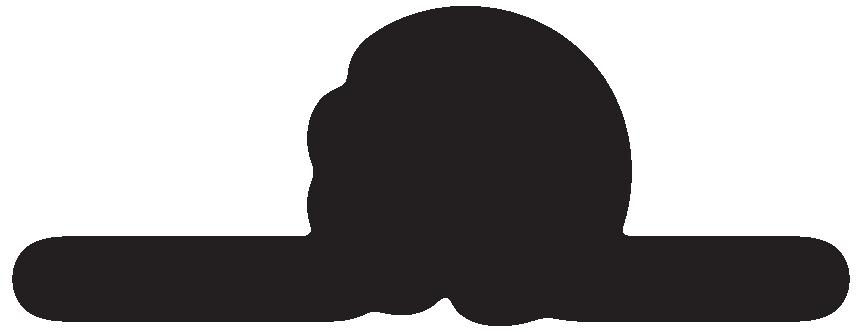



Paragraph Building


Student’s Workbook
